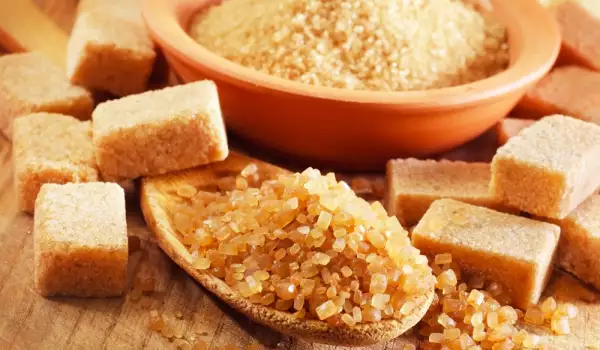Brown sugar is gaining ever wider popularity among those who are trying to eat healthier and are seeking an alternative to white sugar and the different sweeteners. Undoubtedly, brown sugar has numerous advantages, although choosing a quality one is not an easy task.
History of Brown Sugar
Brown sugar has a remarkably long history and was the 1st type of sugar ever to be used in cooking. Sugarcane, which has been grown in China and India for millennia, is used to produce brown sugar. At around the 4th century BC, sugarcane was introduced to Egypt and Persia and later, Alexander the Great popularized it in Greece and Rome.
In antiquity, they would boil sugarcane until sugar crystals formed. Later on, Marco Polo would describe the Chinese sugar mills he had witnessed and how the locals used dark brown sugar without refining it any further.
By the middle of the 15th century, sugar production had grown into an industry and sugar factories would appear on the Canaries, Madeira island and Cypress. These were the first sugar factories in the New World and they finally supplied Europe with sugar in the 17th century. This led to the boom of sugar refineries and plantations in the tropical regions of South America.
For a long period, the sugar from sugarcane was considered a medicine and was only purchasable from pharmacies. Later, vases of unrefined sugar became popular in European castle courtyards and it slowly transformed into a symbol of elegance.
In the 19th century, newly built white sugar refineries had no control over the production of brown sugar and because of this began an intense campaign to undermine it, stating it was a carrier of disease-causing microbes. This campaign was exceptionally successful and until the dawn of the 20th century, people really did believe that brown sugar was of inferior quality and harmful to health.

Composition of Brown Sugar
The color of brown sugar comes from the molasses that are added during the processing of the sugar. Molasses is a sweet, thick, dark brown product resulting from the crystallization process. It is a by-product of sugar production. 1 tsp of brown sugar contains 15 g carbohydrates and around 60 cal.
Even though many people consider brown sugar to be healthier than white, the fact is that their nutritional values do not differ much. Brown sugar is 97% sucrose, 2% water and 1% other compounds, while white sugar is 99.9% pure sucrose.
Types of Brown Sugar
Brown sugar is divided into 2 main types according to the U.S. Department of Agriculture - light and dark. The difference in color is due to the different amount of molasses in the final product.
Both unrefined sugarcane and refined sugar with added molasses are considered brown sugar.
Refined sugar with added molasses is a product without much in the way of nutrients, while unrefined brown sugar has more benefits.
Unrefined sugar results from the first crystallization of the sugarcane. The best known types are Demerara, Turbinado and Muscovado.
Demerara - a light brown sugar with coarse and golden crystals, slightly stuck together from the molasses. To produce Demerara, the sugarcane is ground and the resulting juice is then thickened. This creates a thick syrup, which is then dehydrated. The final result is coarse crystals of brown sugar, which are not refined. The main exporter of Demerara is the island of Mauritius.
Muscovado - this is the darkest brown sugar found on the market. It is stickier than the others and has a specific taste due to the sugarcane syrup which is not released from it during processing. Barbados and the Philippines are the largest manufacturers of this type of sugar.
Turbinado - it is a partially processed sugar, with minimal amounts of molasses removed. Turbinado is made from cut sugarcane, from which the juice is released. Part of the liquid content is evaporated and the crystals are ground in a centrifuge to finish the dehydration process. This type of sugar is the most widely used alternative to refined white sugar.

Selecting Brown Sugar
The color of the sugar can be a very misleading criteria when buying brown sugar because white sugar can be dyed with molasses. That is a product known as brown delicacy sugar. To avoid being fooled into buying this sugar, know that unrefined sugar has large amber crystals or even chunks. Genuine brown sugar has more moisture, giving it a different texture than white sugar.
Benefits of Brown Sugar
There are numerous debates regarding the advantages and health benefits of brown sugar. It is not much different from white sugar in energy value but there are more beneficial substances in brown sugar. The specific flavor and color are due to the contained therein healthy calcium, potassium, iron, sodium, magnesium, phosphorus.
Cooking with Brown Sugar
The caramel flavor of brown sugar makes it an excellent addition to tea, coffee and various cocktails. Brown sugar can substitute white sugar entirely in different sweets. There is no difference in the usage but the treats sweetened with brown sugar end up with a nice crunchy texture, remarkable flavor and color.
Dangers of Brown Sugar
Even though it has some advantages over white sugar, don't forget that you shouldn't use it in excess. Overconsumption of sugar in any form can cause hypertension, diabetes, weight gain and numerous other health problems. The recommended daily dose for women is no more than 1 1/5 tbsp (18 g) per day and 1 2/3 tbsp (25 g) for men.


















